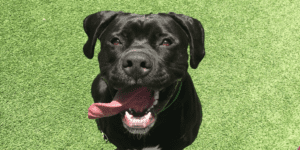When it comes to training our beloved furry friends, we often encounter common misconceptions and mistakes that can hinder their progress. In this blog post, we’ll explore some prevalent dog training myths and mistakes, shedding light on the truth and providing insights to optimize your training efforts.
Common Mistakes
You Can Teach an Old Dog New Tricks: Contrary to the belief that older dogs can’t learn new skills, they absolutely can! Max from “How the Grinch Stole Christmas” was played by older shelter dogs who were successfully trained. While changing habits may be challenging, with time and patience, dogs of any age can grasp new cues and skills.
Poisoning Cues: Creating negative associations with cues, known as poisoning cues, can lead to disobedience. Avoid linking cues with unpleasant experiences. For instance, if a dog is called inside from the backyard or given a bath immediately after responding to the “Come” command, it creates a negative association with that cue. This may lead the dog to perceive the command as undesirable, thus your dog will learn to ignore/avoid the cue. Consistent positive reinforcement is key to maintaining a strong bond with your furry companion.
Repeating Cues: Repeating cues excessively can cause your dog to tune out. Instead, focus on engaging activities to capture their attention without resorting to constant cue repetition.
Lack of Consistency: Consistency is the backbone of successful dog training. Practice at home regularly to reinforce good behavior and establish lasting habits. Consistency builds trust and a deeper connection between you and your furry friend.
Over Enrichment/Stimulation: While enrichment is vital, too much of a good thing can lead to overstimulation and obsessive behaviors. Find a balance by providing various activities in moderation to keep your dog engaged and content.
Encouraging and Enforcing Bad Behavior: Unintentionally encouraging bad behavior is a common mistake. Avoid reinforcing negative actions like:
- Petting dogs when they jump up.
- Yelling at a dog when they are barking.
- Answering your dog for barking at us (demand barking).
- Opening the door when they jump on it.
Dogs in the end do what works for them, and if bad behavior receives attention (even if it is negative), they will continue to act on that behavior. By rewarding positive behavior, you shape a well-behaved and happy dog.
Waiting for a Mistake Before Teaching: Rather than focusing solely on correcting mistakes, proactively reward your dog for good behavior. This positive reinforcement fosters a desire to work for you and strengthens the bond between you and your canine companion. For instance, if you are working from home and your dog is just lying there quietly – reward them.
Punishing Potty Mistakes: Rubbing your dog’s nose in their accidents won’t deter them from pottying indoors. This approach only instills fear, resulting in pets concealing accidents in secluded spots, like under the bed or behind couches. They will avoid eliminating around you. Focus on positive reinforcement and effective potty-training methods.

Debunking Common Myths:
Alpha Theory: Contrary to popular belief, the Alpha theory that suggests rolling dogs onto their backs, holding their necks, or making them walk through doors last is a myth. This idea has been thoroughly discredited by scientific studies. Fear-based training can cause a dog to be resentful and scared and can cause aggression behaviors to surface against other animals, strangers and even children.
Originally derived from observations of adult wolves in captivity, the Alpha theory falls short when applied to domestic dogs. Wolves are hunters and exhibit dynamics vastly different from dogs, which are natural scavengers.
The notion that dogs attempt to dominate humans is a far-fetched claim when considering the definition of dominance—being in charge and controlling resources. We, as caregivers, hold the reins by providing food, bathroom breaks, and fulfilling all their physical and emotional needs. Consequently, there’s no need to assert dominance through physical actions like tossing, biting, or determining who goes first.
Misbehaviors such as rushing through doors, begging, jumping, or being mouthy are not signs of dominance but rather indicative of inadequate training. Instead of attempting to “dominate” your dog, what they truly need is proper training to foster positive behavior.
Your Dog Will “Grow Out of It”: If you neglect to teach your dog what is acceptable or not, they won’t naturally develop positive habits; instead, they may form undesirable ones. For instance, a dog won’t miraculously stop chewing on things, including you, just because they’ve aged. Chances are, they’ve adopted this behavior as a form of self-soothing or play, which was inadvertently encouraged.
The idea that dogs will instinctively learn to potty outside as they grow up is also a fallacy. All behaviors, without exception, require guidance and training. Dogs aren’t born with a built-in training manual that activates when they hit a certain age.
Even discussions about behaviors like submissive urination may include the notion that dogs will “outgrow it.” In reality, it’s the result of your puppy experiencing more of the world and gradually becoming less excited or fearful in certain situations through conditioning. The key lies in proactive teaching and guiding your pup through their developmental stages.
Dogs Can Learn a Limited Number of Words:
The idea that there is a limit to the number of words dogs can learn is also a myth. While some suggest a ballpark figure of around 200 words, the exact limit is hard to determine. Contrary to this belief, numerous accounts suggest that dogs can learn a vast vocabulary, potentially reaching up to a thousand words—with supporting evidence.
The debate around this topic persists because dogs can’t verbally respond, making it challenging to gauge their true linguistic capacity. However, it’s essential to recognize that dogs possess a remarkable ability to understand and process information beyond what we often credit them for. In addition to words, dogs can grasp hand signals, gestures, social vocal cues, and facial expressions.
Their proficiency in reading body language surpasses that of most animals on this planet. The key takeaway is that the earlier you commence teaching your dogs, the more adept they become in various communication areas, showcasing their impressive ability to problem-solve and comprehend a wide range of cues and signals.
Crate Training is “Cruel”: Crate training, when done properly, provides a safe space for your dog. It can prevent destructive behaviors and offer a comforting retreat when needed.
You Have to Wait to Start Training: The earlier you begin, the better. While attending formal classes may require certain vaccinations, this shouldn’t hinder your efforts. You can initiate basic training at home, laying the foundation for good habits.
Notably, starting early is crucial, and you don’t necessarily need your dog present for initial guidance. We can provide training advice and tips even without direct interaction with your pet. Additionally, for a more personalized approach, we offer in-home lessons, bringing training sessions to your doorstep.
In essence, whether you choose to start at home or opt for formal classes, initiating training sooner rather than later is key to establishing positive behaviors and fostering a strong bond with your canine companion.
Using Food in Training is Bribery: While it might initially feel that way, the truth is quite different. In dog training, it’s crucial to fade the lure gradually, and success hinges on impeccable timing and consistent practice.
Food plays a vital role as a motivator for dogs. Just as humans seek compensation for their work, dogs appreciate incentives. Over time, the need for visible treats diminishes as dogs associate positive actions with rewards. Dogs, driven by what works for them, instinctively form habits when reinforced with rewards for good behavior.
The key lies in understanding that dogs may not always recall the specific reason for their positive behavior, but they do remember the positive outcome. This reinforcement helps instill habits and encourages continued positive behavior, creating a harmonious relationship between the trainer and the canine.
Playing Tug of War Creates Aggression: Tug of war is a healthy enrichment activity when played responsibly. When playing tug, pay attention to cues such as a sneeze (sniff), indicating that your dog is not being serious but is rather enjoying the interaction.
While tug of war is an excellent activity, it’s essential to be mindful of potential risks. Watch out for your dog adjusting their grip on the rope, as this can inadvertently lead to accidentally catching your fingers. Using ropes in tug of war sessions also serves as a valuable tool for teaching the “drop it” command, enhancing both playtime and training in a safe and enjoyable manner.
Dogs Can’t Be Well-Behaved and Sleep in the Bed: Whether your dog sleeps in your bed is a matter of personal preference. If you desire your furry companion’s company during the night, then sharing the bed is a viable option. There are even noteworthy health benefits associated with having your dog sleep beside you.
However, it’s important to acknowledge that there can be drawbacks. If your dog is frequently moving, grooming themselves, or tends to take up a significant portion of the bed, achieving a good night’s sleep might become challenging. Lifestyle changes such as getting married or having a baby may alter your preferences.
A 90-pound golden retriever might be considered on the larger side, but if he doesn’t disrupt your or your partner’s sleep, his presence and warmth may be comforting. Dogs sharing the bed can provide a sense of companionship, potentially lowering blood pressure and stress levels.
Ultimately, whether your dog sleeps in bed with you is a personal decision and you should take into account both your family’s and your dog’s comfort. Some dogs may prefer the cool floor, while others enjoy being snuggled under the blankets. It all comes down to what works best for you and your canine companion.
Contact Us
Learn more: www.pawhootz.com
Email us: [email protected] or call us at 817-498-6410
Make an appointment with us: https://pawhootz.com/make-an-appointment/



